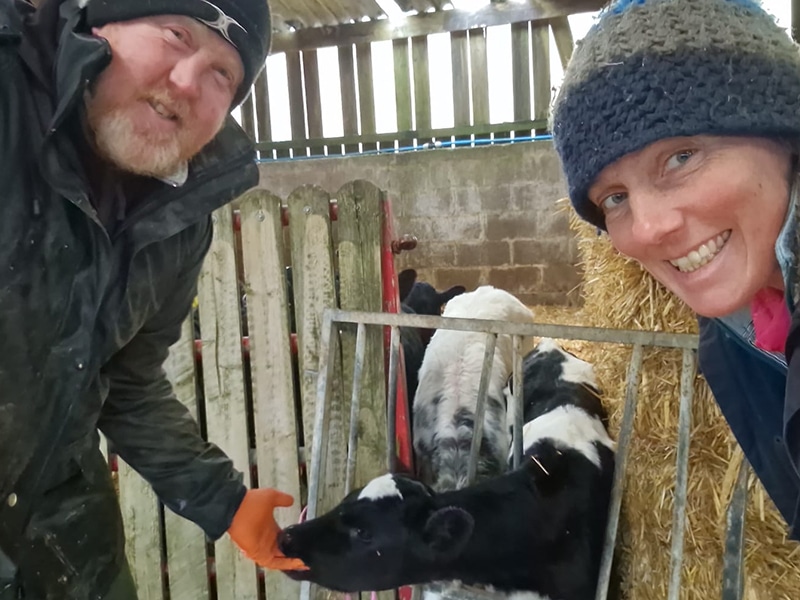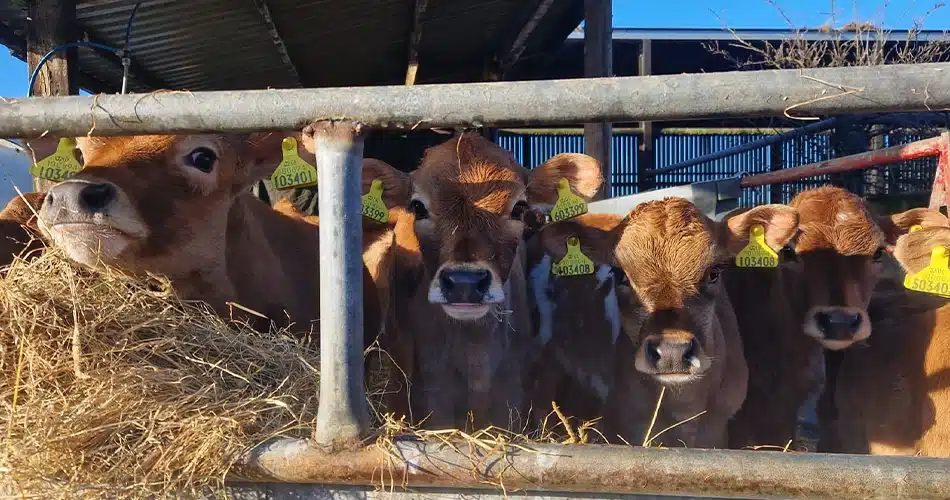
Introducing our latest arrivals at Park House Farm
Like many other dairy and livestock farmers, no sooner have the festive celebrations ended then we are busy getting ready for the arrival of the spring calves and, as we write, this year the girls in our herd have already given birth to over a hundred beautiful calves with around another fifty due in the next few weeks.
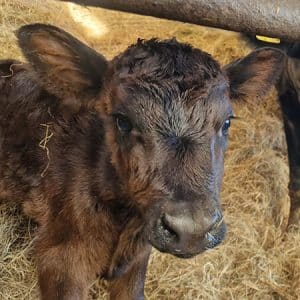 “Calving has pretty much gone without a hitch this year, helped in no part to everyone on the farm lending a hand.” Mark tells us on a wet and wild afternoon on the farm, “Even our good friend Matthew from Three Hills Gelato has been called upon for help and we actually think he really enjoyed it…”
“Calving has pretty much gone without a hitch this year, helped in no part to everyone on the farm lending a hand.” Mark tells us on a wet and wild afternoon on the farm, “Even our good friend Matthew from Three Hills Gelato has been called upon for help and we actually think he really enjoyed it…”
The calves started arriving at around midnight on 31st January and it has been steady progress every day since, averaging twenty calves each week.
Whilst the cows have more than played their part in the whole process, the same couldn’t be said about the weather. It will come as no surprise that winter in the northern Lake District can be pretty wet, but the cold spells that arrived this year were particularly biting.
“It wasn’t that there was a massive drop of snow and blizzards for us to contend with, it was just the sudden drops in temperature. All the cows and calves were safely under cover in the sheds and out of the elements, with plenty of bedding that we’d produced earlier in the year.”
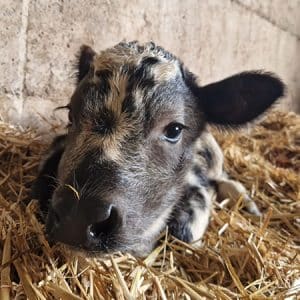 “The problem was that they are a thirsty bunch and we need to ensure there’s a plentiful supply of water, but when everything is frozen solid it’s not that easy. So the hardest part of calving this year was probably being their water carrier!”
“The problem was that they are a thirsty bunch and we need to ensure there’s a plentiful supply of water, but when everything is frozen solid it’s not that easy. So the hardest part of calving this year was probably being their water carrier!”
The weather hasn’t all been terrible and there have been just as many days when the herd have been able to get back into the pastures and enjoy the fresh grass.
“Obviously the calves all stay safely under cover in the barns for now but their chance to explore the pastures will come once the warmer spring weather is with us.”
Both the cold winter months and the calving season have an effect on the organic milk our herd produces, and that means we’ve had to adapt and juggle things a little to make sure everyone gets fed by their mums, and our lovely cheese still gets made.
“As you might expect, the make-up of the milk changes quite significantly during each winter with the butterfats becoming softer as a result of a more limited diet; unfortunately this isn’t great for cheese-making.”
“Last summer we grew and harvested a great crop of hay on the farm and feeding this to the cows has a stimulating effect on their digestive system; the roughage is beneficial to the gut, improving the butterfat in the milk, both in quantity and quality.”
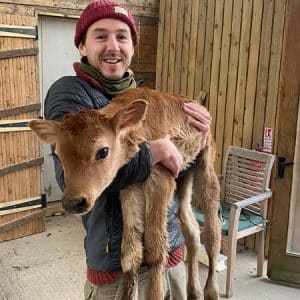 “The result is that the hay has brought all the benefits we’d hoped for and the milk is already being turned into the lovely creamy cheese we all want.”
“The result is that the hay has brought all the benefits we’d hoped for and the milk is already being turned into the lovely creamy cheese we all want.”
“They say you can judge the health of a herd by the quality of the milk; no matter how good the hay, there really is no substitute for the cows eating fresh from the pasture. You can see the cows perk up as soon as they are allowed out, and the composition of the milk when they have had a day or two in the fields absolutely speaks for itself.”
“It has been incredibly busy for us all and, at times, calving has had to take priority over cheese-making; after all, we are farmers first and foremost.”
“We’ll hold our hands up, we know this has meant that we’ve not always been able to keep up with demand but we’d much rather produce the quality of cheese and butter that we’re completely happy with, even if that means not making as much as we’d like.”
“So, on behalf of myself and Jenny, and everyone here at Park House Farm, thank you for being patient with us over recent weeks – it really is greatly appreciated and we firmly believe the wait for these great cheeses will truly be worthwhile.”
